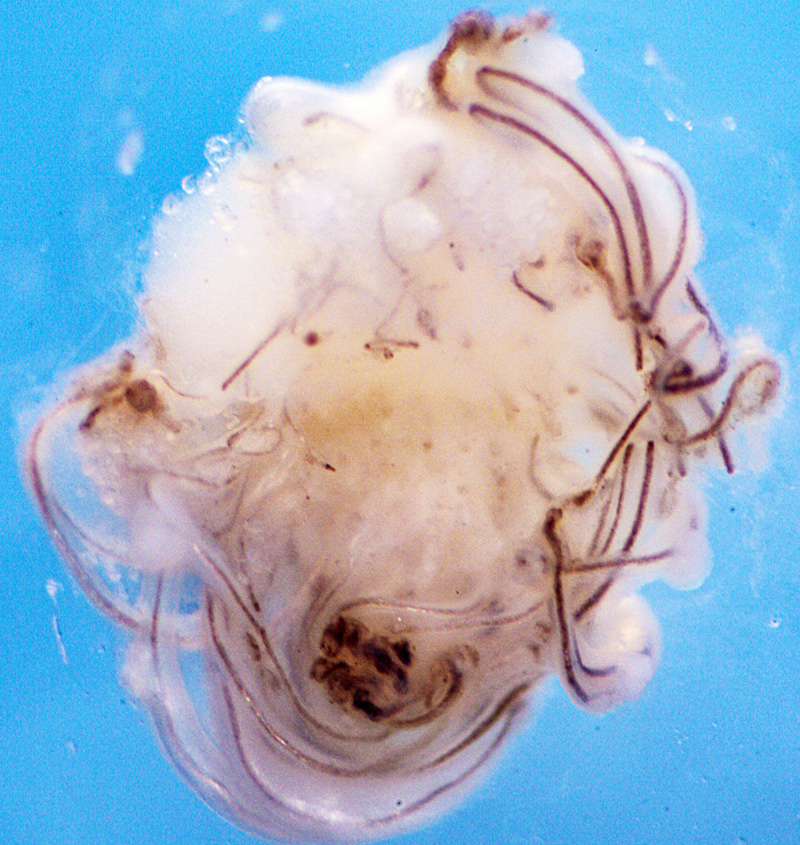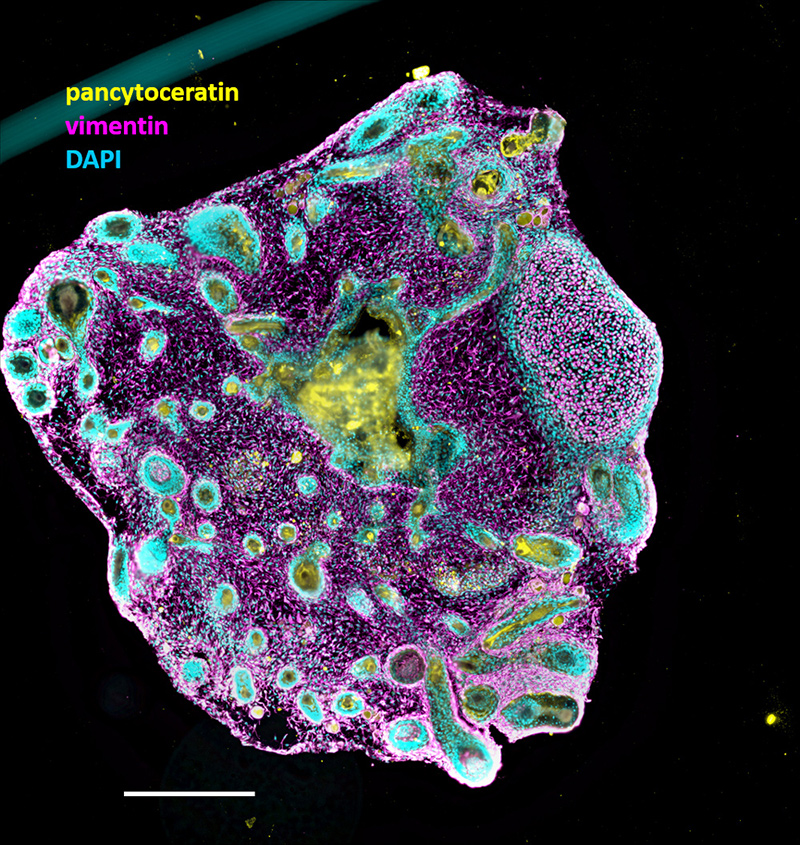
Organoids are complex cell systems that, as the name suggests, resemble tissues and organs in their composition. Whether it is the skin, intestine, or brain, organoids have become an integral part of current research. Unlike in two-dimensional cell culture, cells in organoids can be studied in a microenvironment that closely resembles physiological reality. This makes it possible to make more reliable statements regarding their translation to the human body. Therefore, organoids play an essential role in the chain of events between basic research and clinical applications and fill the gap between simple 2D cell culture systems and complex bioreactor systems.
Nowadays, organoid systems are available for a variety of tissue types. The development of new protocols for the production, culture, and application of organoids leads to a growing number of usable models with increasingly diverse analysis and application possibilities.

© Fraunhofer ISC

© Fraunhofer ISC
Images of a skin organoid. When observed under a stereomicroscope, specific features of the skin organoid, such as the prominent hair follicles, can be discerned. Microscopic images of stained skin organoids provide insights into their histological architecture. Alongside regions containing keratinocytes (pancytokeratin-positive cells, yellow), compartments housing stromal cells (Vimentin-positive cells, pink) can be identified. The cell nuclei are depicted as cyan-colored structures.
